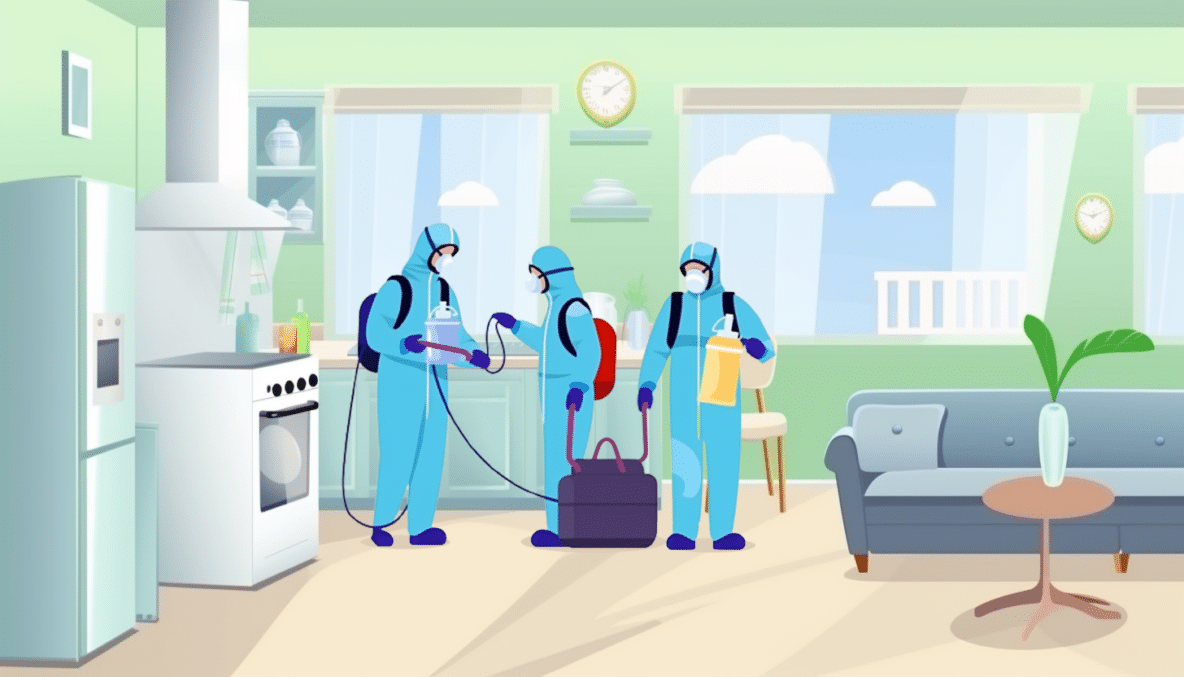Key Points
Listeria Outbreaks from 2020-2023
What You Need to Know About Listeria
How to Prevent Exposure
What to do if You Suspect Listeria Exposure
You might have heard about the listeria outbreaks in the news and how some food brands and products had to be recalled due to contamination. But what is Listeria? Listeria refers to the microscopic bacteria that make up over 21 species, most commonly Listeria monocytogenes. Of the thousands of identified food-borne illness, Listeria is considered the bacteria for one of the most serious, with 20-30% falling fatally ill after contracting Listeria. Sepsis and meningitis are the main two fatal symptoms of Listeria.
Overall, there have been over 20 species of Listeria discovered since 2020. Listeria thrives on various surfaces - food, water, sewage, animal guts, feces, and raw foods. Thriving on raw foods may be the most concerning as it can easily spread through food production facilities in an outbreak.
That’s likely why the CDC has publicly recorded 30 outbreaks since 2011. The most recent Listeria outbreak occurred in August 2023. The recall affected ice cream in New York and Pennsylvania, and overall while only 2 people were hospitalized, the CDC is still conducting an ongoing active investigation that may uncover a higher amount of numbers.
As Listeria is microbial, it is imperative to have a dedicated disinfection team on standby to provide professional desanitization services to help stop the spread, especially if you think you’ve been exposed.
Listeria Outbreaks 2020-2024
The most recent outbreak is related to the recall of certain ice cream flavors due to Listeriosis. There have been other Listeriosis outbreaks in recent years, from those found on leafy greens to deli meats, packaged salads, and even cooked chicken.
Taken from the CDC, here’s a list of outbreaks since 2020:
2020
- Deli Meats
- Enoki Mushrooms
2021
- Dole Packaged Salads
- Fresh Express Packaged Salads
- Fully Cooked Chicken
- Queso Fresco
2022
- Enoki Mushrooms (again)
- Deli Meat and Cheese
- Brie and Camembert Cheese
- Ice Cream
2023
- Ice Cream
- Leafy Greens
- Peaches, Nectarines, and Plums
2024
- Queso Fresco and Cotija Cheese
The CDC has a full list of affected outbreaks dating all the way back to 2011.
Steps to Identifying Listeria
First, check to see if you own any of the products that are being recalled by checking the list of products affected. As of August 2023, Listeria has been found on Soft Serve on the Go ice cream cups distributed by the company Real Kosher Ice Cream of Brooklyn, NY. The recalled ice cream product had been sold in several surrounding states and other areas on the East Coast. The FDA has released a full recall report that should be reviewed if you believe you are affected. If you have been storing any of these products prior to 8/5/23, the FDA strongly advises throwing them out.
Even if you don’t necessarily have a product, you may suspect you may have been exposed due to food poisoning symptoms.
Listeria Symptoms
Anyone who believes they’ve been exposed to contaminated food should immediately visit a doctor, especially if they have any of the following symptoms:
- Fever
- Chills
- Muscle aches
- Diarrhea
- Upset stomach
- Stiff neck
- Headache
- Confusion
- Loss of balance
- Vomiting that can lead to dehydration
Vulnerable or immunocompromised populations should be immediately hospitalized or brought to the ER in the event of any of these symptoms.
Who is at risk?
The vulnerable and immunocompromised should especially be aware of Listeria outbreaks. Vulnerable and immunocompromised populations is a broad term to describe any group of individuals that have a partially developed or compromised immune system.
When they are exposed to the bacteria their safety is more at risk than others as their immune system is not “firing on all cylinders” to effectively eradicate listeriosis. These groups may include:
- The elderly
- Those with chronic diseases affecting the immune system
- Pregnant women and newborn babies
Where is Listeria most prevalent?
Listeria is known to colonize in static water pools, or water trap points, especially in food production facilities. Poorly constructed walls can also lead to holes and water-damaged flooring, cracks, holes or gaps. Listeria can colonize in all of these situations and can spread as water is tracked from area to area.
That’s why food production facilities or other food preparation units should be proactive about keeping floors as dry as possible and using a minimal amount of water to keep floors as dry as possible. Cleaning and disinfecting should also have a place in daily protocol.
Other places Listeria can manifest include:
- Cleaning equipment
- Processing equipment
- Chillers, freezers, and air-handling systems
How to Prevent Exposure During Listeria Outbreaks

Wearing nitrile gloves while handling food can help lessen the extent of cross contamination.
Since Listeria can not be seen by the naked eye, it’s imperative to act proactively by taking preventative measures. This can be done in a number of ways, including introducing new methods into your cleaning routine that you may have overlooked.
Here are a number of methods that work well for the home:
- Cleaning and disinfecting the interior of the refrigerator: including the inside of the walls, shelves, and vegetable or fruit compartments of the refrigerator.
- Washing cutting boards, countertops, and utensils that come in contact with food.
- Washing and disinfecting pet food dishes separately to avoid cross-contamination.
Disinfect and Clean Your Freezer Compartment
A detail often overlooked is the freezer. Many think of the freezer as the last place bacteria might grow: after all, it’s usually below 0 degrees Fahrenheit (-18 degrees Celsius) and difficult for most species to survive in.
You may be surprised to hear that bacteria can live in freezer temperatures. In the freezer, growth is inhibited, making only the very hardy adaptable to freezing temperatures successful. It is something you should do at least once every 3-6 months. So, make it a habit during every season change.
Steps to Deep Clean and Decontaminate Your Freezer
- First, remove all food and items from the freezer and store them in a temperature-safe cooler temporarily.
- Then, turn off the freezer or unplug the entire unit. Allow the unit to defrost – this can take 30 minutes or more which is why we recommend keeping the food and items in a temperature-safe unit.
- Thoroughly clean the interior surfaces of the compartment with a mild soap and warm water solution. In most cases, about 2 tablespoons of soap diluted by warm water works well, in addition to a sponge or a soft towel to scrub the inside of the compartment.
- Disinfecting the unit looks a little different. Avoid bleach if you can: it’s more of a hassle than it’s worth. Look to mix natural alternatives such as Thymol or lemon juice–either one or two tablespoons of natural solvent diluted with warm water.
- Wipe the disinfectant solution throughout the compartment, covering all surfaces, and let sit for 2 minutes before drying.
- Be sure to clean all corners, which can include the seals or door gaskets. Let sit for 2 minutes.
- Wipe all surfaces with a dry cloth, including the corners, seals, or door gaskets.
- Optional: Let air dry for an additional 30 minutes.
- Plug the unit back in and allow the temperature to be brought back up–this might take another 30 minutes or more, depending on the age of your unit.
- Once the freezer is at temperature again (0 degrees Fahrenheit or below), place all items back inside the compartment.
Depending on how easy it may be, you may want to consider vacuuming the condenser coils on your unit as well. This is not necessary for the disinfectant process, just a recommendation to improve the efficiency and longevity of your unit. What better time than to do it during a seasonal cleaning?
What to Do If You Suspect Listeria Exposure
It’s a serious matter when you’re near a Listeria outbreak, experiencing symptoms, or suspect you have contaminated products. Thankfully, there is a protocol in place to help limit the outbreak. Here are three major things you should do if you’ve been exposed to Listeria:
- If you’re feeling sick, consult your doctor. Make an appointment to inform them of your symptoms and have your blood tested for traces of Listeria. If you do test positive, a doctor will prescribe you antibiotics. Take them exactly as prescribed by your doctor, finishing the full course of antibiotics even if you’re feeling better.
- Inform any close friends or family that you may have had close contact with so they can be aware should they feel ill.
- Contact a professional disease decontamination company to fully disinfect and decontaminate your home.
We Decontaminate Listeria Outbreaks
Never feel obligated to fully decontaminate yourself. A professionally licensed and certified disease decontamination company like Bio Recovery is fully equipped and trained to handle these situations yourself. Call Bio Recovery for compassionate, well-equipped support to safely address your situation.
Share this Post



